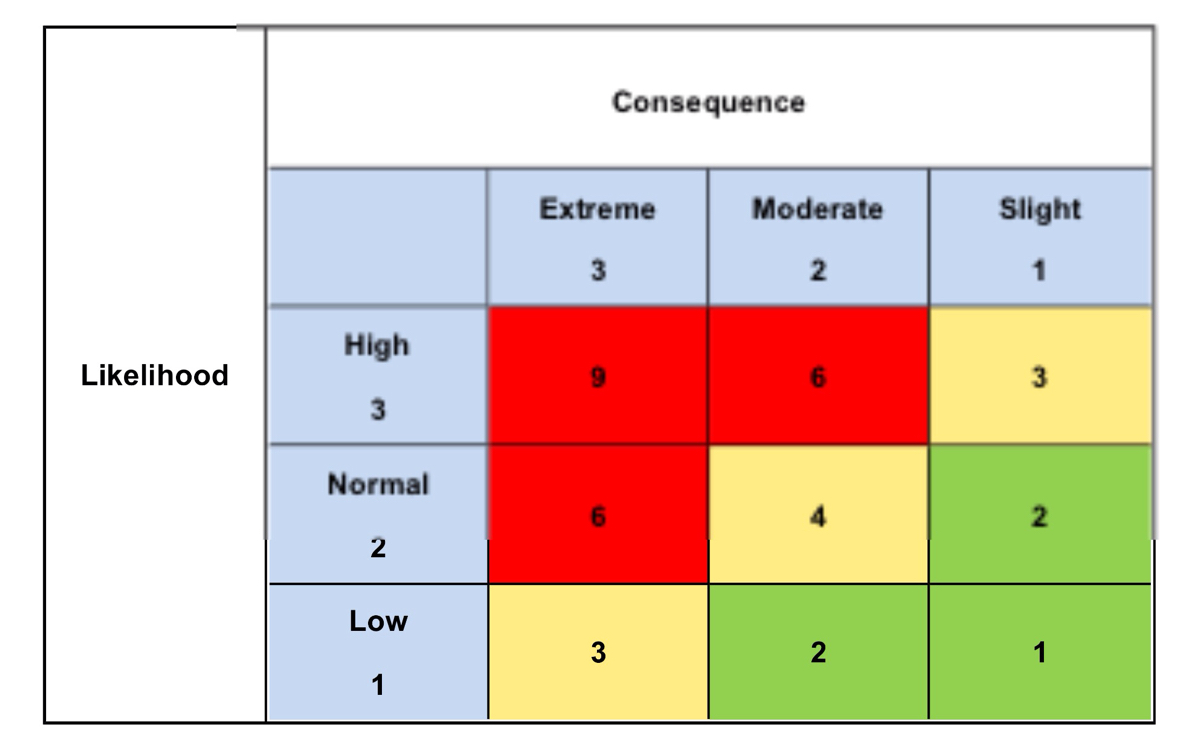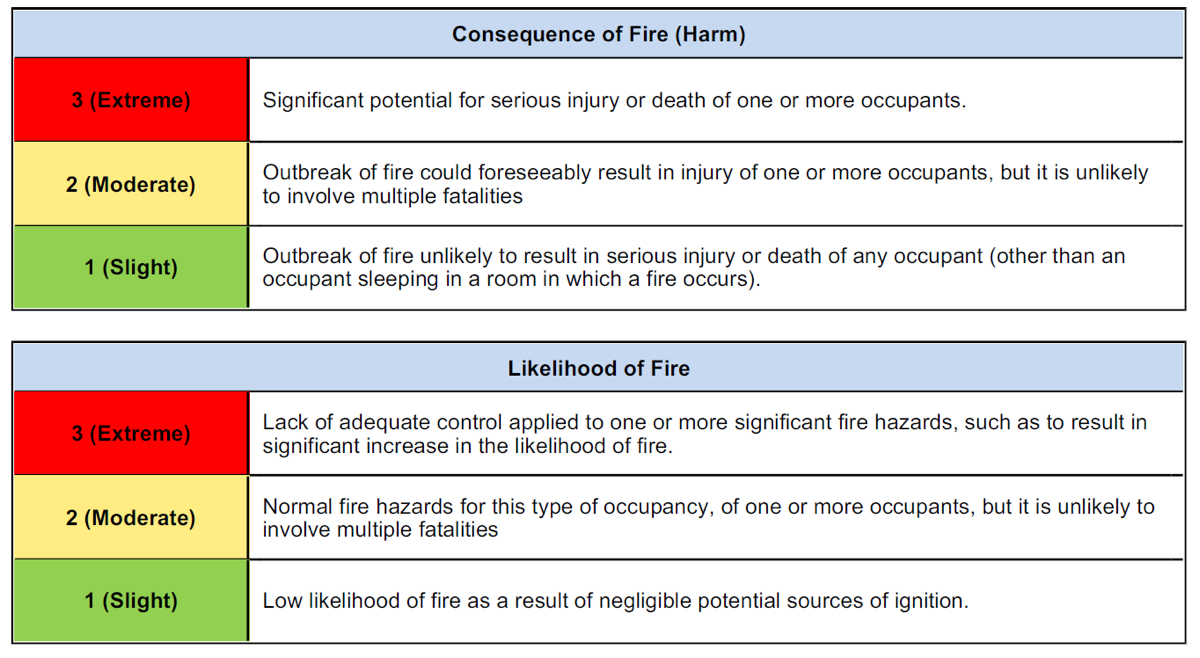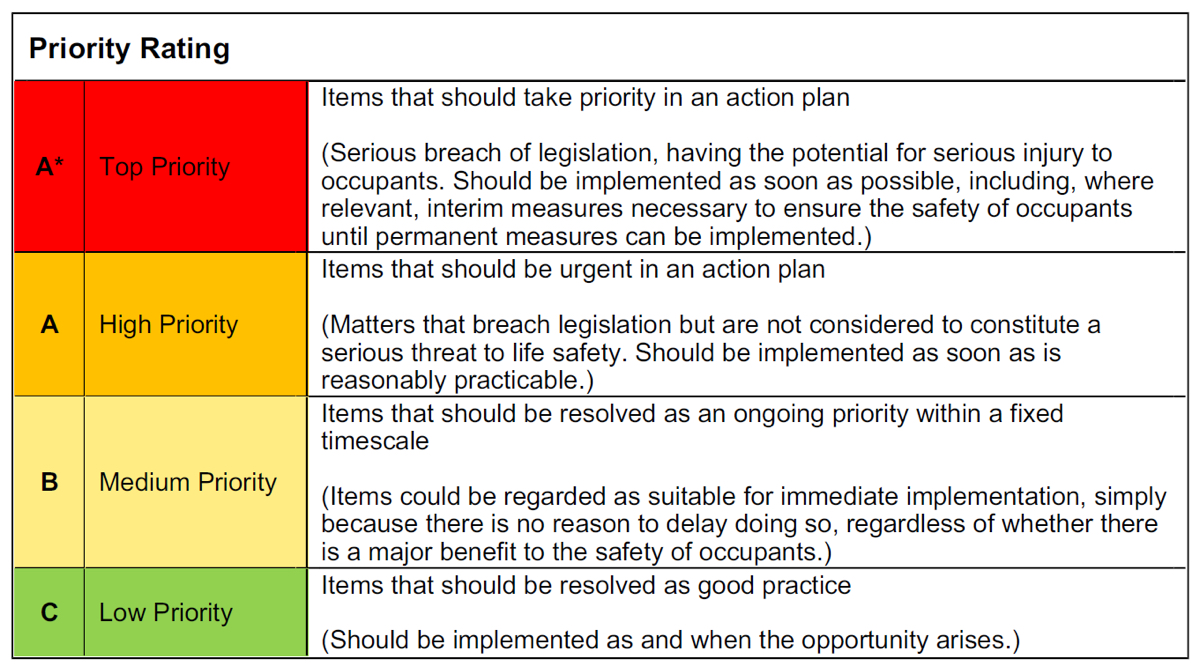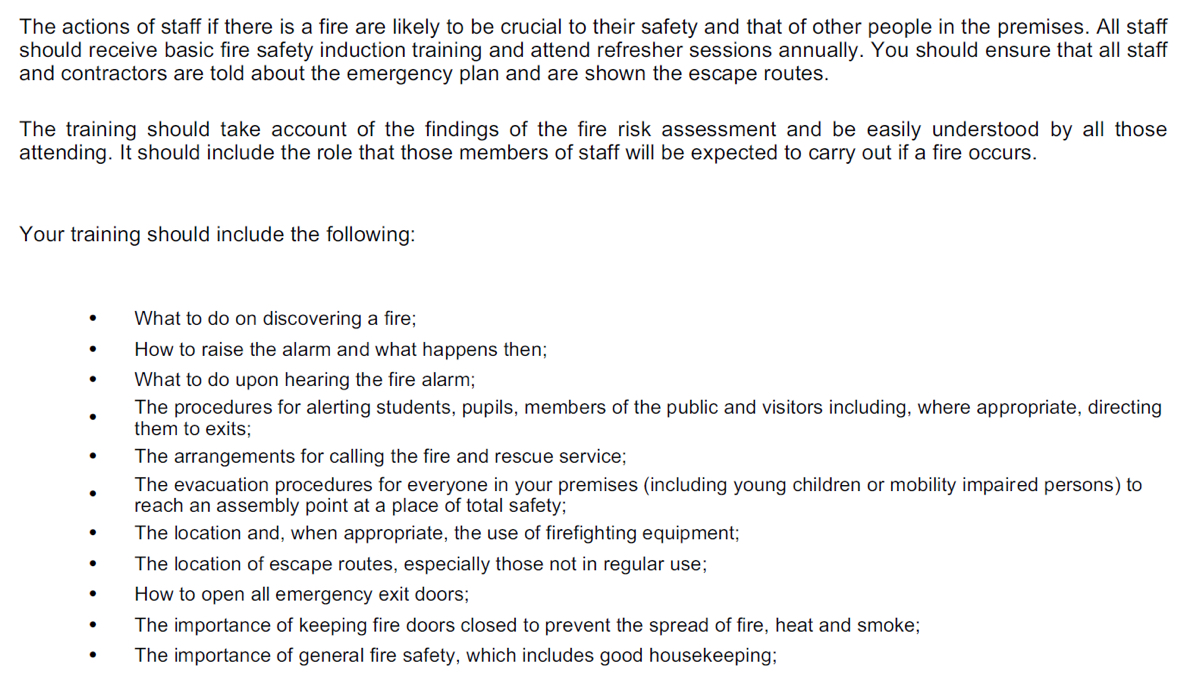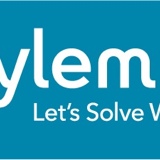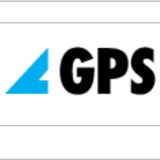Title Page
-
Fire Risk Assessment For
-
Address
-
Assessor Name
-
Date of Fire Risk Assessment
-
Next reassessment
-
Fire Risk Rating
- 1
- 2
- 3
- 4
- 6
- 9
-
Responsible Person
-
Person Consulted
Terms of Reference
-
The Regulatory Reform (Fire Safety) Order 2005, which came into force on 1st October 2006, replaces previous fire safety legislation. The order covers general fire precautions and other fire safety duties which are required to protect 'relevant persons' in case of fire.
The purpose of this report is to provide an assessment of the risk to life fire in this building and, where appropriate to make recommendations to ensure compliance with fire safety legislation. The intention is to identify any areas of non-compliance and make recommendations to provide a minimum fire safety standard that are practicable to implement in order to provide a reasonable level of safety for people in and around the premises. This report does not address the risk to property or business continuity from fire.
I f your premises are in a multi-use complex then the information on hazard and risk reduction will still be applicable to you. However, any alterations to the use or structure of your individual unit will need to take account of the overall fire safety arrangements.
Your premises may be simple, with few people present or with a limited degree of business activity, but if it forms part of a building with different occupancies, then the measures provided by other occupiers may have a direct effect on the adequacy of the fire safety measures in your premises.
This FRA should be reviewed by a competent person by the date indicated above or at such earlier time as there is reason to suspect that it is no longer valid or there have been significant changes.
Where your control measures were found to be adequate you must monitor and maintain those measures to ensure conditions do not deteriorate.
It is critical that the findings of the fire risk assessment are acted upon and that the significant findings of the assessment (and the assessment itself) are kept up to date.
Important Note
Although the assessor has exercised all due diligence in this inspection of your premises and in the preparation of this report, there may be other matters that were not taking place at the time of the visit or that occur and the assessor was not informed of those matters. You should, therefore carefully consider this report in its entirety to satisfy yourself that the main fire hazards and risks associated with your business have been covered.
Where fire compartments / fire dampers / ceiling voids were considered inaccessible for safety reasons and could not be physically accessed or were outside the visual range, the assessor cannot provide technical comment on these areas. Under these circumstances the responsibility to provide this technical information rests with the duty holder.
Overall Building Risk Rating
-
The rating is calculated based on two specific criteria. Consequence and Likelihood. Consequence of a fire outbreak requires the assessor to grade the potential harm to relevant persons on a scale of 1 to 3. Likelihood of a fire outbreak requires the assessor to assess the possibility of a fore occurring on a scale of 1 to 3. Together these values are used to consider an appropriate Fire Risk Rating for these premises.
-
Consequence =
-
Likelihood =
-
Overall Fire Risk Rating =
- 1
- 2
- 3
- 4
- 6
- 9
-
Significant Findings Identified
-
-
Significant Findings
Significant Finding
-
Significant Finding Identified
-
Category
- Fire Hazards and Their Elimination or Control - Electrical Sources of Control
- Fire Hazards and Their Elimination or Control - Smoking
- Fire Hazards and Their Elimination or Control - Portable Heaters and Heating Appliances
- Fire Hazards and Their Elimination or Control - Cooking
- Fire Hazards and Their Elimination or Control - Housekeeping
- Fire Hazards and Their Elimination or Control - Arson
- Fire Precaution Measures - Means of Escape
- Fire Precaution Measures - Escape Lighting
- Fire Precaution Measures - Fire Safety Signs & Notices
- Fire Precaution Measures - Means of Giving Warning in Case of Fire
- Fire Precaution Measures - Fire Fighting Equipment
- Fire Precaution Measures - Measures to Limit Fire Spread and Development
- Management of Fire Safety - Procedures and Arrangements
- Management of Fire Safety - Training & Drills
- Management of Fire Safety - Testing & Maintenance
- Management of Fire Safety - Records
-
Risk Rating
-
Recommendations
-
Photos
-
Action By
-
To be Completed By
General Information
The Building
-
Premises Type
- Manufacturing
- Assembly
- Warehousing
- Offices
- Trade Counter
-
Add media
-
Number of Floors
Floor
-
Use of Floor
-
Approximate Floor area m2
-
Details of Construction
-
Add media
-
Year of Construction
-
Number of staircases
-
Number of fire exits
The Occupants
-
Maximum number of Employees
-
Maximum number of the Public (Visitors and Contractors)
-
Are there any Sleeping Occupants?
-
Are there any Disabled Occupants?
-
Is there a PEEP in place?
-
Are there any Lone Workers?
-
Are there any Young Persons?
Fire Loss Experience
-
Have there been any previous Fires?
Other Relevant Information
-
Details
Fire Hazards and Their Elimination or Control
Electrical Sources of Ignition
-
Reasonable Measures taken to prevent electrical fires?
-
Are electrical installations regularly inspected and tested?
-
Are portable appliances suitably maintained?
-
Is there a suitable policy regarding the use of personal electrical appliances?
-
Are trailing leads kept tidy?
Smoking
-
Is smoking prohibited within the building?
-
Are people abiding by the smoking policy?
-
Are there any suitable arrangements for those who wish to smoke?
Portable Heaters and Heating Installations
-
If portable heaters are used are they kept away from combustibles when in use?
-
Is the use of the more hazardous types (i.e. radiant bar fires or LPG appliances) avoided?
-
Are heaters kept away from heat sources?
-
Are fixed heating systems regularly maintained?
Cooking
-
Are reasonable measures taken to prevent fires as a result of cooking?
-
Are filters / extraction systems cleaned regularly?
-
Are suitable fire extinguishers available?
Housekeeping
-
Is housekeeping adequate?
-
Are fuel sources stored away from ignition sources?
-
Are combustibles / rubbish kept to a minimum within the building?
-
Are rubbish / fuel sources stored correctly?
-
Are dangerous materials / liquids stored correctly?
Arson
-
Is the building secured at night to prevent arson?
-
Is rubbish stored outside, away from the building in a secure compound?
Fire Precaution Measures
Means of Escape
-
Is the means of escape adequate?
-
Do all fire exits lead to a place of safety?
-
Are means of escape kept clear / unobstructed?
-
Do all fire exits open without the use of a key?
-
Do exits easily and immediately open when required?
-
Are exits secure and still usable?
-
Are travel distances to the nearest fire exit reasonable?
-
Can all occupants get to a place of safety (outside) within 2-3 minutes in the event of a fire?
-
Are occupants within inner rooms given adequate warning?
-
Are risk rooms separated from the means of escape?
-
Is the means of escape reasonable for disabled occupants?
Escape Lighting
-
Is emergency lighting provided? If yes give brief details
-
If emergency lighting is not provided is natural lighting via windows adequate?
-
Is emergency lighting provided inside and outside the building?
-
Is there sufficient lighting for changes in level (stairs)?
-
Is there sufficient lighting for changes in direction?
-
Is there sufficient illumination to show fire alarm break glass call points or fire fighting equipment?
Fire Safety Signs & Notices
-
Is there a good standard of fire safety signs and notices?
-
Are directional fire exit signs provided on escape routes?
-
Is there signage indicating method of opening doors?
-
Are fire action notices displayed next to each fire exit stating what to do in the event of a fire?
-
Are fire extinguishers provided with the correct signage?
-
Are fire doors clearly indicated?
Means of Giving Warning in Case of Fire
-
Is there a fire alarm in place?
-
Are smoke and heat detectors provided?
-
Is the alarm and detection system installed throughout the building?
-
Is the fire alarm and detection system adequate for the building and occupants?
-
Is smoke or heat detection installed in areas that a fire may develop unnoticed?
-
Is the fire alarm and detection system tested and working?
-
Can the alarm system be heard from all areas of the building?
-
Is there fire detection installed on the means of escape?
Fire Fighting Equipment
-
Are fire extinguishers and fire blankets provided?
-
Is the fire fighting equipment appropriate for the risk?
-
Are fire extinguishers located on the escape routes and near to exit doors?
-
Are fire extinguishers securely hung on wall brackets or suitable floor plates?
-
Are the fire extinguishers regularly maintained?
Measures to Limit fire Spread and Development
-
Are walls, floors and ceilings in good condition (no holes)?
-
Are wall hangings kept to a minimum to prevent the spread of fire?
-
Are the fire doors kept closed?
-
Are wall and ceiling linings kept to a minimum to prevent the spread of fire?
Management of Fire Safety
Procedures and Arrangements
-
Is there a fire procedure in place?
-
Is there a nominated person to call the fire service in the event of a fire?
-
Are regular safety inspections conducted?
-
Are persons nominated to inform the fire service of any dangers within the building?
-
Are there suitable arrangements for ensuring the premises have been evacuated?
-
Is there a suitable fire assembly point(s)?
-
Are employees nominated an trained to use fire extinguishers?
-
Are there employees nominated and trained to assist with evacuation, including evacuation of disabled people?
-
Is there a fire safety logbook containing all relevant information?
Training and Drills
-
Are employees given Fire Safety training on induction?
-
Are employees given periodic refresher training at suitable intervals?
-
Are employees informed of the fire risks in the premises?
-
Are employees informed what to do in the event of fire?
-
Are employees shown the method of operating break glass points?
-
Are employees shown the location and use of fire extinguishers?
-
Are employees shown how to summon the fire rescue service?
-
Are employees informed of the persons nominated to assist with evacuation?
-
Are employees informed of the persons nominated to use fire extinguishers?
-
Are all staff with special responsibilities (i.e. fire wardens) given additional training?
-
Are the fire drills carried out at appropriate intervals?
-
Are visitors / contractors informed of all of the fire procedures?
Testing and Maintenance
-
Is the workplace adequately maintained?
-
Is the fire alarm and detection system tested weekly?
-
Is the fire alarm and detection system maintained by a competent person on a six monthly basis?
-
Is the emergency lighting system tested monthly and annually?
-
Are the fire extinguishers maintained annually by a competent person?
-
Are external escape staircases and walkways regularly checked?
-
Are escape routes and exit doors checked routinely?
Records (fire safety logbook)
-
Are fire drills recorded?
-
Date of the last fire drill
-
Is fire training recorded?
-
Date of the last fire training
-
Is the fire alarm tested?
-
Date of the last fire alarm test
-
Is the escape lighting tested?
-
Date of the last escape lighting test
-
Is portable appliance testing recorded (PAT)?
-
Date of the last PAT test
-
Are fire extinguishers tested?
-
Date of the last fire extinguisher test?
-
Maintenance and testing of other fire protection systems?
-
Date of the last fire system test?
General Fire Notice
-
Any Person Discovering a Fire Must
Appendix 1: Fire Safety Routines
Routine Frequency
-
Daily
-
Activites
- Safety Inspection
- Safety Inspection (Branch Manager)
- Fire alarm indicator panel for normal condition
- Emergency escape lights (check for faults)
- Fire safety signs and fire extinguishers in position
- Escape routes unobstructed
- Fire resisting doors shut
-
Records
- None
- Log book
- Log book if fault
- Test Certificate
-
Nightly
-
Activites
- Waste bins emptied etc.
- electric plugs removed and sockets not overloaded
- Fire resisting doors held on electromagnetic door holders closed
-
Records
- None
- Log book
- Log book if fault
- Test Certificate
-
Weekly
-
Activites
- Fire alarm test (actuation from different trigger devices)
- Fire alarm test
- Fire fighting equipment (visual check)
- Open exit doors not in daily use
- Sprinkler test
- Smoke vents / control systems (operation)
- Operation of pressurisation system
-
Records
- None
- Log book
- Log book if fault
- Test Certificate
-
Monthly
-
Activites
- Emergency escape lighting test including any auto start generator
- Fire fighting equipment (visual check)
- Open exit doors not in daily use
- Safety inspection (Regional Manager)
- Safety inspection
- Fire alarm test
- Inspection of pressurisation system
- Automatic opening doors - open on power cut
- Test any standby generators (e.g. Fire alarm, emergency lighting, etc.)
-
Records
- None
- Log book
- Log book if fault
- Test Certificate
-
Quarterly (3 monthly)
-
Activites
- Sprinklers
-
Records
- None
- Log book
- Log book if fault
- Test Certificate
-
Six monthly
-
Activites
- Fire warden training
- Fire evacuation drills
- Fire alarm serviced
- Sprinklers
- Dry / wet risers inspection
-
Records
- None
- Log book
- Log book if fault
- Test Certificate
-
Annual
-
Activites
- Safety inspection (Divisional SHEQ Manager)
- Fire risk assessment review
- Portable appliance PAT testing
- Fire extinguisher test and inspection
-
Records
- None
- Log book
- Log book if fault
- Test Certificate
-
Biannual
-
Activites
- Safety inspection (Divisional SHEQ Manager)
- Fire risk assessment review
- Portable appliance PAT testing
- Fire extinguisher test and inspection
-
Records
- None
- Log book
- Log book if fault
- Test Certificate
-
Three yearly
-
Activites
- External escape stairs / balconies / walkway
- Sprinklers
- Fixed wiring installations tested / inspected
-
Records
- None
- Log book
- Log book if fault
- Test Certificate
-
Five yearly
-
Activites
- Fire fighting equipment (discharge test - most types)
- Fire alarm wiring test
- Fixed electrical installations testing / inspection
-
Records
- None
- Log book
- Log book if fault
- Test Certificate
-
Ten yearly
-
Activites
- Fire extinguishers (discharge test - carbon dioxide and dry powder only)
-
Records
- None
- Log book
- Log book if fault
- Test Certificate
-
Fifteen yearly
-
Activites
- Sprinklers
-
Records
- None
- Log book
- Log book if fault
- Test Certificate
It is recommended that one person nominated to be responsible for the maintenance of the fire precautions within the premises and the completion of all the records so as to ensure that the necessary entries are made into the log book.
Appendix 2: Staff Fire Training






